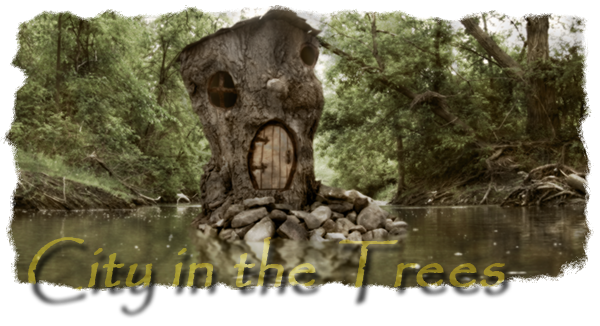Tuesday, September 25, 2012
Due to be stacked in the bathroom soon :)
In my local wanderings over the years I’ve tended to focus
on roads and bridges that used to be part of the public space and no longer
are... no longer are part of the public space, or no longer are, period. I’ve
long been fascinated with the long-lost pony truss one-laner that used to carry
Lawrence Avenue traffic across the East Don. That it persisted for around a
decade after the Don Mills development sprawled half a mile west of it
fascinates me and I wish I knew what that was like for the people who moved in
there. In any event, it was superseded by the current six-lane span at the time
the Don Valley Parkway pushed north to devour the right-of-way of Woodbine
Avenue, and the little bridge itself must have been removed at that time. Why
the city didn’t simply leave it I can’t say; perhaps because it had a wooden
deck it was assumed it would quickly become a hazard to incidental hikers.
Anyway, it’s brought me to picking up a few books on Amazon.
Charles Sauriol was a longtime explorer and lover of the Don valley who wrote a
number of books about its uses and history, both personal and anecdotal. He
passed away relatively recently, as I recall; last ten years or so. A big chunk
of the Don parklands is now named in his honour. I found a couple of his books
available inexpensively on Amazon; these are Tales of the Don and Remembering
the Don. Charles Sauriol himself, it seems to me, tended to be focused on
the Don valley from pretty much south of what’s now Eglinton Avenue (which didn’t
span either the East or West Don until the 1950s), but I find myself interested
in seeing what he relates. It’s long overdue; I’ve been meaning to read these
books since the man was still alive.
At the same time I also came across a new offering by John
Sewell called The Shape of the Suburbs: Understanding Toronto’s Sprawl,
published in 2009. John Sewell was a one-term mayor of Toronto in the 1970s;
formed in the mold of longtime Toronto resident Jane Jacobs. As such, his
attitudes are, to me, somewhat parochial and outdated. For example, I recall
him suggesting, when Toronto was being amalgamated into the so-called “megacity”
at the end of the 90s, that not only should we be keeping the six cities that
formerly comprised Metro, but that we ought to be breaking them up into smaller
units, in fact, which struck me as bordering on insane. Nevertheless I bought another
of his books in the mid-90s, The Shape of the City, and enjoyed it immensely
for its subject matter and the breadth and depth of the research. Given that he
largely avoided interjecting with his own views, but pretty much just laid out
the story, I didn’t find it as egregious as otherwise might have. That said, my
own views on such matters have mellowed over the years into something more of a
grey area.
This new book is reputedly about the expansion of Toronto
into the near suburbs (those that were in Metro and now form the outer parts of
Toronto proper, like the part where I live), and those newer suburbs beyond, in
the regional municipalities that form the nominal Greater Toronto Area... the
decision-making processes that created them, the infrastructure challenges they
represented, the highway systems they necessitated, and so on. Since I live
here, there are matters of considerable interest to me and I’m looking forward
to reading this companion to The Shape of the City, as well as my copy of The
Death and Life of Great American Cities by Jane Jacobs, written during her
tenure as David to Robert Moses’s Goliath in New York before she moved here at
the end of the 60s.
Subscribe to:
Post Comments (Atom)


2 comments:
The Sewell book looks very interesting indeed. I've never been closer to Toronto than Niagara-on-the-Lake, but from your description, the issues Sewell discusses could apply to any sprawling city. My first exposure to city planning was in grade school, where we read about L'Enfant's design for Washington. We grew up fifteen miles from the nearest city, but my brother and I played "City" under the ancient lilac bushes by our house, drawing streets in the dry dirt with a stick and bringing toy cars, trucks, blocks for buildings, leafy twigs for trees, dime-store human figures made of metal, and so forth, not all of it in proportion. And outside of "town" there was a farm under the syringa bush, complete with tractors, hard-rubber farm animals, and "hay" in the barn (dry grass clippings). Kernels shucked from a cob of feed corn was the harvest in the wagons behind the tractors, until the "city" experienced an invasion by Rodents from Outer Space and Mom nixed the corn thing. Then, decades later, there was Sim City--a lot of fun, but 'way too addictive for my own good. Now I've got a son-in-law who is--guess what--a city planner.
So far, about a quarter of the way into the book, I'm finding it frustrating because all the things Sewell praises in one generation he excoriates in the next. He seems somehow to miss that these things are fractal. It's like he decided the way things were when he was 30 was perfect and any change since then has been objectionable. One of us is missing something, but I'm inclined to think it's him. Not surprisingly. :)
Post a Comment